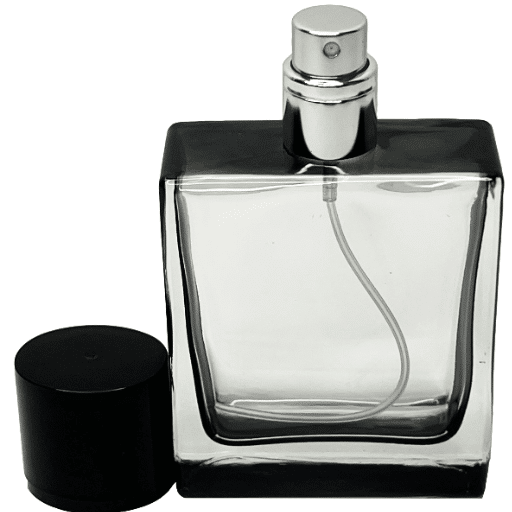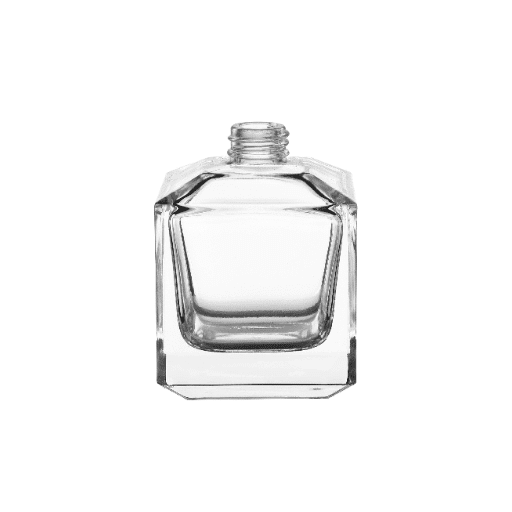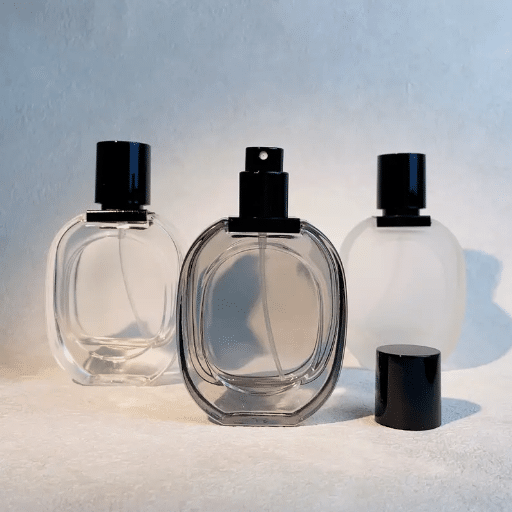The perfume industry thrives on the elegance and functionality of its packaging, and glass perfume bottles stand at the forefront of this dynamic sector. This guide aims to provide an in-depth exploration of wholesale glass perfume bottles, examining their types, manufacturing processes, and the critical factors to consider when sourcing them. From understanding the materials and designs to evaluating supplier reliability and sustainability practices, this guide will serve as a valuable resource for businesses and individuals looking to make informed decisions in this niche market. Whether you are a reseller, a brand owner, or simply curious about the intricate details of perfume bottle production, this comprehensive overview will equip you with the knowledge needed to navigate the industry effectively.
What Makes a Perfume Bottle Unique?
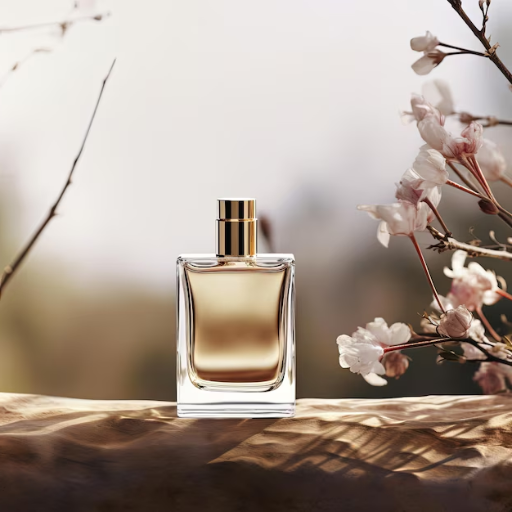
A perfume bottle’s uniqueness lies in its design, functionality, and material composition. The aesthetics of the bottle, including its shape, color, and decorative elements, play a critical role in branding and consumer appeal. Functionally, the bottle must ensure proper containment and preservation of the fragrance, often utilizing specialized nozzles and sealing mechanisms to prevent evaporation or contamination. High-quality materials, such as glass or premium-grade plastics, are chosen for their durability, compatibility with the fragrance, and visual impact. Together, these factors combine to create a balance between artistry and practicality, making each perfume bottle distinctive.
Understanding the Design of a Perfume Bottle
Key Factors in Perfume Bottle Design
The design of a perfume bottle is a multi-faceted process that combines aesthetics, functionality, and branding. From an aesthetic standpoint, the bottle must convey the identity of the fragrance, often reflecting elements such as luxury, elegance, or innovation. Common design elements include unique shapes, intricate engravings, and the strategic use of color and transparency. Functionally, the bottle must ensure airtight sealing and precise dispensing. This is typically achieved through features like crimped spray nozzles, tamper-proof closures, and high-pressure-resistant caps to prevent degradation from air or light exposure.
Material selection is another critical aspect, with glass being the most preferred choice due to its non-reactivity and visual clarity. For certain markets or purposes, advanced plastics may be utilized to balance weight and durability. Additionally, sustainability is becoming a central focus, with brands exploring recycled materials and refillable designs to reduce environmental impact. Ultimately, the perfume bottle serves as a powerful representation of the fragrance it contains, blending technical innovation with artistic expression to enhance the customer’s overall experience.
The Role of Perfume in Enhancing Aesthetics
From my experience and research, perfume plays a multifaceted role in enhancing aesthetics by acting as an extension of personal style and identity. It goes beyond just scent and becomes a statement of sophistication, often complementing attire and overall presentation. The right fragrance can evoke emotions, create memorable impressions, and even influence perceptions, making it a critical accessory in personal grooming. Additionally, the aesthetic appeal of the perfume bottle itself often reflects the essence of the scent, blending function with art to heighten the sensory experience.
How Glass Perfume Bottles Add Value
Glass perfume bottles add significant value by combining practicality with aesthetic appeal, ensuring both functional integrity and an elevated user experience. The durability of glass makes it an ideal material for preserving the chemical stability of the fragrance, as it acts as a non-reactive barrier, preventing any unwanted interactions between the perfume and its container. This is particularly important for scents with high alcohol content, where stability ensures longevity and consistent performance over time.
From an aesthetic perspective, glass offers versatility in design, enabling a wide range of shapes, colors, and finishes that enhance the visual identity of the product. Common technical parameters include the use of high-quality, lead-free glass with a thickness ranging from 3mm to 5mm for optimum strength and clarity. Many luxury perfume bottles also incorporate fine glass-cut techniques or frosted finishes to achieve a distinctive and luxurious look.
Furthermore, opacity or tinted glass can be used to protect light-sensitive ingredients in certain fragrances, maintaining their efficacy and scent profile. The precision of the bottle’s neck and nozzle design is also critical, as it ensures an accurate and consistent spray mechanism, which is essential for user satisfaction. This blend of functional design and artistic craftsmanship underscores the value that glass perfume bottles bring to both the product and the consumer experience.
Why Choose Wholesale Glass Perfume Bottles?

Wholesale glass perfume bottles offer numerous advantages for manufacturers and retailers in the fragrance industry. They provide cost efficiency through bulk purchasing, reducing per-unit expenses significantly. Glass is an ideal material for preserving the integrity of fragrances, as it is non-reactive, durable, and protects the contents from external contaminants. Additionally, wholesale options allow for customizable designs, enabling brands to create distinct and visually appealing packaging that enhances their market presence. By choosing wholesale glass perfume bottles, businesses can efficiently balance functionality, quality, and cost-effectiveness, all while delivering a superior product to consumers.
Benefits of Buying Perfume Bottles in Bulk
Buying perfume bottles in bulk offers significant advantages for businesses. First, it allows for considerable cost savings by reducing the per-unit price, which directly translates to a higher profit margin. Second, bulk purchasing ensures consistent supply, minimizing disruptions in production or order fulfillment. Finally, it simplifies inventory management and supports scalable growth as demand increases. By opting for bulk options, we can maintain quality, control costs, and meet customer needs efficiently.
Cost-Effectiveness of Wholesale Purchases
Wholesale purchasing is highly cost-effective for several reasons. By buying in larger quantities, we achieve economies of scale, significantly reducing the cost per unit. This directly impacts profit margins positively. Additionally, wholesale options minimize logistical inefficiencies by consolidating shipments, lowering transportation expenses, and reducing carbon footprint. Key parameters to consider include order minimums typically set by wholesalers, storage capacity for bulk inventory, and shelf-life or turnover rates for perishable goods. These factors ensure that the savings gained from bulk purchasing align with operational capabilities and market demand.
Variety and Selection in Wholesale Perfume Bottles
Wholesale perfume bottles are available in a broad range of materials, shapes, capacities, and designs to suit diverse manufacturing and branding needs. Glass bottles dominate the market due to their durability, recyclability, and premium aesthetic appeal, while plastic options cater to cost-effective and lightweight requirements. Sizes typically range from 5ml sample vials to 100ml or larger bottles for retail use, depending on distribution goals and market trends.
Design features such as sprayers, screw tops, or roller balls provide functional versatility, while decorative elements like embossing, frosted finishes, or metallic accents allow customization for luxury or mass-market positioning. Wholesale suppliers often accommodate varied order quantities and customizable designs to meet specific branding and operational requirements, though minimum order quantities (MOQs) are common. When sourcing, businesses must assess key factors such as consistent quality, compatibility with perfumes’ chemical composition, and adherence to regulatory standards to ensure product safety and presentation.
How to Select the Best Perfume Bottle Manufacturer?
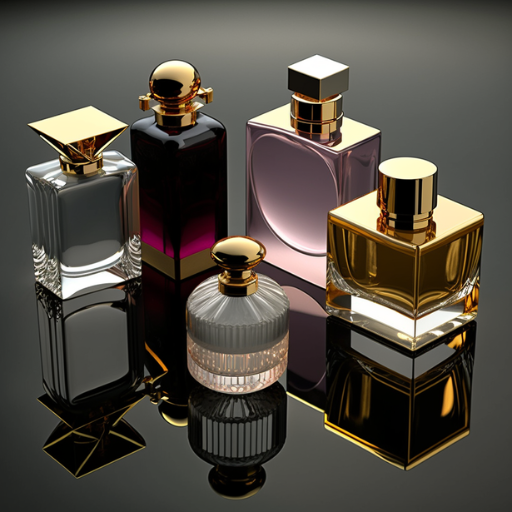
When choosing a perfume bottle manufacturing company, first check their production capacity and specialization relevant to your requirements. Determine whether they can sustain and create petitive and qualitatively durable packaging in harmony with different formulations. Check their adherence to applicable industry guidelines and regulations to ensure product safety. Furthermore, examine their customization flexibility including MOQs and lead times and assess whether they meet your branding requirements and operational deadlines. Lastly, ask for samples and assess their portfolio to evaluate the workmanship and consistency delivered.
Key Factors to Consider in a Perfume Bottle Manufacturer
When selecting a perfume bottle manufacturer, it is critical to evaluate their technical capabilities, compliance with industry standards, and ability to meet specific branding requirements. Below are some concise yet detailed factors to consider, synthesized from authoritative industry resources:
- Material Quality and Compatibility
The manufacturer should provide bottles made from high-quality materials, such as Type III soda-lime glass or high-grade acrylics, ensuring chemical compatibility with alcohol-based and oil-based formulations. Confirm that the material is non-reactive and capable of preserving fragrance integrity over time.
- Range of Capacities and Formats
Manufacturers should offer versatility in bottle capacities, commonly ranging from 5 mL to 100 mL, with options for standard neck sizes such as 13/415 or 15/415, which accommodate industry-standard atomizers. Custom formats or limited-edition designs should be available upon request.
- Compliance with Regulatory Standards
Bottles must adhere to stringent regulations, including FDA, ISO 9001, and REACH compliance, to ensure safety, durability, and environmental responsibility. Check for certifications that guarantee manufacturing processes meet international safety and quality standards.
- Customization Capabilities
Ensure the manufacturer offers extensive customization options like embossing, screen printing, metallization, and coating finishes. The ability to match pantone colors precisely or apply secondary processes such as UV lacquering demonstrates advanced technical expertise in design customization.
- Durability and Functional Testing
Confirm that bottle designs undergo rigorous testing for impact resistance, airtight seals, and compatibility with sprayer systems to avoid leakage or degradation during shipping and usage. For durability benchmarks, seek a drop resistance of at least 1 meter for glass bottles.
- Production Volume and Lead Time
Verify the manufacturer’s minimum order quantities (MOQs) and their ability to scale production efficiently. Lead times of 6–12 weeks are standard for high-volume orders, but shorter timelines may be negotiable for smaller purchases or repeat runs.
- Sustainability Practices
Seek manufacturers who use recyclable or biodegradable materials and adopt eco-conscious practices, such as reduced energy consumption during production or water-based coatings. Certifications such as ISO 14001 demonstrate adherence to environmental sustainability.
- Quality Assurance and Sampling
Request samples to inspect the craftsmanship of bottles firsthand. Verify consistency in dimensions, finishes, and print quality across multiple units. Additionally, inquire about quality control protocols, such as 100% inspection or random sampling, during production.
By addressing these parameters thoroughly, you can confidently assess a perfume bottle manufacturer’s ability to meet your technical and branding specifications while maintaining quality and compliance.
Questions to Ask Your Perfume Bottle Supplier
- What materials do you primarily use for your perfume bottles, and are they customizable for unique designs?
I would ensure the supplier offers high-quality materials like glass or environmentally friendly options and inquire about their ability to support personalized designs that complement my brand identity.
- What is your minimum order quantity (MOQ), and are there options for smaller production runs?
I would confirm if the supplier’s MOQ aligns with my business needs, especially during initial production phases or for niche product lines.
- What certifications and standards does your manufacturing process comply with?
I would verify that the production aligns with regulatory standards such as ISO or REACH, ensuring safety, compliance, and sustainability.
- Can you provide a timeline for production and delivery, including contingencies for delays?
I would request a detailed production schedule to determine if it fits my launch plans and evaluate their systems for managing unexpected disruptions.
- What quality control measures do you implement during and after production?
I would ask about their inspection processes, such as random sampling or detailed inspections, to ensure consistency, durability, and defect-free bottles.
By focusing on these targeted questions, I can effectively evaluate a supplier’s capacity to fulfill both the technical and aesthetic demands of my perfume packaging requirements.
Evaluating Perfume Packaging Quality – Answering Key Questions
- What materials do you primarily use for perfume bottles?
High-quality glass is the most commonly used material for perfume bottles due to its durability, clarity, and ability to preserve the fragrance. For sustainable solutions, some manufacturers incorporate recycled glass or biodegradable materials. Plastic components, if included, are usually high-grade variants like PET or acrylic for lightweight and durable caps or embellishments.
- What production capacity can you handle, and what is your lead time?
Most manufacturers list production capacities ranging from 10,000 to over 100,000 units per month, with lead times averaging 4-10 weeks depending on the order volume and design complexity. Custom designs may extend timelines slightly compared to stock bottle options.
- What quality control measures do you implement during and after production?
Leading companies employ stringent quality checks, including automated visual inspections and manual random sampling throughout production stages. Post-production testing includes stress-tests for durability, leak-proofing, and uniformity assessment to ensure premium quality and adherence to specifications.
By aligning these responses with specific functional and aesthetic requirements, I can pinpoint reputable providers capable of delivering superior perfume packaging.
What Are the Types of Glass Perfume Bottles Available?
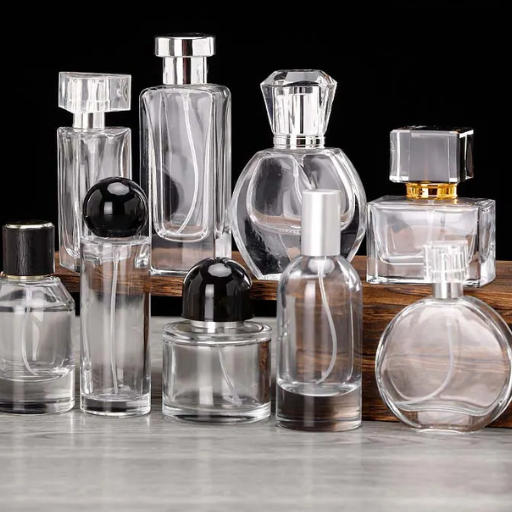
Glass perfume bottles are available in several types, each tailored to specific aesthetic and functional needs. Common types include classic cylindrical bottles, which offer a timeless design; rectangular-shaped bottles, prized for their sleek and modern appeal; and round-shaped bottles, often associated with elegance and softness. Specialty designs, such as custom-molded bottles, allow for unique branding opportunities. Additionally, glass bottles can come in varied finishes, including frosted, clear, or colored glass, providing flexibility in visual impact. These categories are further enhanced by options like screw caps, spray nozzles, or rollerball mechanisms to suit diverse application preferences.
Exploring Clear Glass Perfume Bottles
Clear glass perfume bottles are an exceptional choice for showcasing the true color and clarity of the fragrance inside. They provide a timeless elegance and emphasize simplicity, making them favored by both luxury and contemporary brands. From my research, clear glass is highly versatile, as it can be paired with various decorative elements, such as metallic caps, custom etching, or luxurious labels, to create a premium look. Additionally, clear glass bottles are sustainable and recyclable, aligning with the growing demand for eco-friendly packaging. They combine practicality with aesthetic appeal, ensuring that the fragrance remains the centerpiece while meeting modern branding and environmental standards.
The Versatility of Roll On Bottles and Spray Bottles
|
Parameter |
Roll On Bottles |
Spray Bottles |
|---|---|---|
|
Application Method |
Controlled and precise application |
Broad and even distribution |
|
Suitable for |
Oils, serums, and concentrated liquids |
Fragrances, mists, and liquid sprays |
|
Portability |
Compact and travel-friendly |
May require larger designs |
|
Reusability |
Easy to refill and reuse |
Often disposable, refillable options exist |
|
Spill Prevention |
Less prone to leakage |
May leak if not sealed properly |
|
Dispensing Mechanism |
Roller ball for small quantities |
Spray nozzle for fine mist |
|
Material Variations |
Glass, plastic, and metal options |
Wide range of material choices |
|
Customization Potential |
High with designs and colors |
High with spray patterns and colors |
|
Ideal Use Case |
Targeted applications |
Quick and widespread coverage |
|
Environmental Impact |
Often reusable and recyclable |
Can vary based on material used |
How to Maintain and Refill Perfume Spray Bottles?
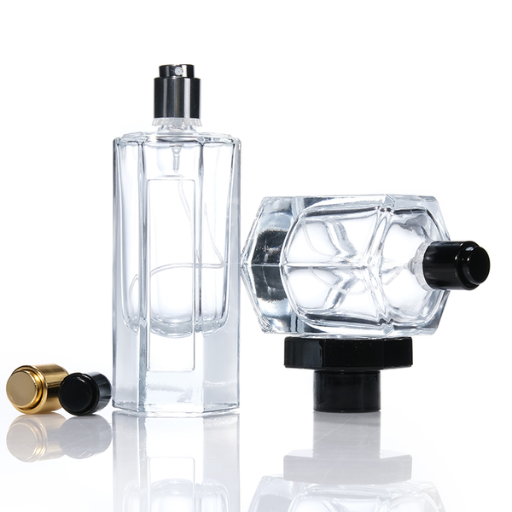
Proper maintenance and refilling of perfume spray bottles ensure optimal functionality and longevity. Here are essential steps and techniques:
- Cleaning Empty Perfume Bottles
To clean an empty perfume bottle, rinse it thoroughly with warm, soapy water. Use alcohol or a mild cleaning solution to remove residue and neutralize lingering scents. For thorough cleaning, allow the bottle to soak for 10-15 minutes before rinsing again with clean water. Ensure the bottle is completely dry before refilling to avoid contamination.
- Proper Techniques for Refilling Glass Spray Bottles
Use a small funnel or dropper to avoid spills and waste when transferring perfume into the bottle. Hold the funnel securely and pour slowly. Ensure the atomizer is tightly reattached after refilling to maintain pressure and prevent leakage.
- Ensuring Longevity of Perfume Glass Bottles
Store the bottle in a cool, dry place away from direct sunlight and heat, which can degrade both the glass and the fragrance. Regularly check for any blockages in the spray nozzle and clean it gently with a damp cloth if needed. Handle glass bottles with care to prevent breakage.
Adhering to these steps will not only preserve the functionality of perfume spray bottles but also protect the quality of the contents.
Tips for Cleaning Empty Perfume Bottles
Cleaning empty perfume bottles requires careful handling to avoid damaging the glass and ensure thorough removal of any residual fragrance. Follow these steps for optimal results:
- Rinse with Warm Water
Start by removing the spray nozzle and rinsing the bottle with warm water. Ensure the water is not excessively hot (ideally around 100°F or 38°C) to prevent glass stress, especially for delicate bottles. Swirl the water inside to loosen any residue.
- Use Mild Soap or Dishwashing Liquid
Add a small amount of mild, fragrance-free soap or dishwashing liquid. Fill the bottle halfway with warm water, replace the nozzle loosely, and shake gently to dislodge any leftover oils or fragrance. Avoid using strong chemicals that can corrode the inside of the bottle.
- Remove Persistent Residue with Isopropyl Alcohol
For stubborn residue, fill the bottle partially with isopropyl alcohol, ideally at a concentration of 70%-90%, to dissolve lingering oils. Allow it to sit for 15-20 minutes, then empty the bottle and rinse with warm water to remove all alcohol traces.
- Clean Small Crevices
Use cotton swabs or a small brush dipped in alcohol or warm soapy water to clean narrow openings or decorative features. Take care not to scratch the surface of the glass.
- Air Dry Completely
Turn the bottle upside down on a clean, lint-free cloth and allow it to air dry fully. Ensure the bottle is completely dry before reassembling or storing, as moisture can promote mold growth.
By adhering to these cleaning methods, you can safely prepare empty perfume bottles for reuse or recycling without compromising their structural integrity or aesthetic appeal.
Proper Techniques for Refilling Glass Spray Bottles
Step-by-Step Guide to Refilling Glass Spray Bottles
- Thoroughly Clean and Dry the Bottle
Before refilling, clean the bottle and nozzle to remove any residue or debris. Utilize warm water and mild soap, rinsing thoroughly to ensure no contaminants remain. Allow the bottle to air dry completely, as even minimal moisture can alter the chemical composition of the liquid you refill it with.
- Inspect for Damage
Check the bottle and spray mechanism for any signs of cracks or wear. Damaged components can compromise the bottle’s functionality or lead to leaks during usage.
- Use a Funnel for Precision
To prevent spills or waste, use a small funnel when transferring liquids into the bottle. This is particularly critical when handling substances like essential oils or alcohol-based liquids, which can evaporate or react quickly.
- Refill with Compatible Liquids Only
Ensure that the liquid you intend to refill is compatible with the material of the glass bottle and the spray mechanism. Certain substances, such as strong acids, may degrade the components, while oils may require specific nozzles for proper dispersion.
- Secure the Nozzle
After refilling, firmly attach and tighten the nozzle to ensure a proper seal. Misaligned or loose nozzles can lead to operational inefficiencies or leaks.
- Label the Bottle Appropriately
Once refilled, label the bottle clearly with the contents, including safety information where applicable. This step minimizes the risk of misuse and ensures proper handling during future applications.
By carefully following these detailed steps, you can extend the life of glass spray bottles while maintaining functionality and safety in their continued use.
Ensuring Longevity of Perfume Glass Bottles
In case of perfume bottles, I make sure not to drop them or expose them to sunlight as well as extreme elements which would shatter the glass, as for the fragrance inside, I handle it with very delicate care. I wash the bottle with warm water and mild soap only if needed, making sure not to use any form of utensils that would scrub, scratch, or ruin the surface of the bottle. I also do not let cap or spray be left not closed properly after usage as it could lead to evaporation or leakage and would ensure the fragrance as well as the bottle would be kept safe from any possibilities of destruction.
Reference Sources
-
Roetell – Glass Perfume Bottles: A manufacturer specializing in wholesale glass perfume bottles with various designs and sizes.
-
Glassnow – Home Fragrance Containers: Offers a range of glass packaging solutions for manufacturers, including perfume bottles.
-
Beausino – Glass Perfume Bottles Wholesale Guide: A guide to sourcing wholesale glass perfume bottles through platforms like Alibaba and Made-in-China.
-
Packamor – Wholesale Perfume Bottles & Packaging: A supplier offering premium glass perfume bottles with custom branding and bulk discounts.
-
Mordor Intelligence – Cosmetic Perfumery Glass Bottle Packaging Market: Provides market insights, trends, and growth forecasts for the glass perfume bottle industry.
Frequently Asked Questions (FAQs)
Q: What are the benefits of purchasing perfume bottles wholesale?
A: Purchasing perfume bottles wholesale can significantly reduce costs and provide a wide variety of styles, such as roller bottles, dropper bottles, and bottles with fine mist sprayers. It is ideal for businesses or individuals looking to buy in bulk for resale or personal use.
Q: How do I choose the right fragrance bottle for my product?
A: Choosing the right fragrance bottle involves considering the type of fragrance, the application method (such as fine mist spray or roll-on), and the desired capacity (e.g., 50ml or 3.4 oz). You may also want to consider aesthetic factors like shape and material, such as glass empty or bottles with metal accents.
Q: What is the difference between a perfume atomizer and a mini perfume bottle?
A: A perfume atomizer is designed to spray a fine mist of fragrance, making it ideal for even application, while a mini perfume bottle typically refers to a smaller-sized bottle suitable for travel or sampling, which may or may not include a spray feature.
Q: How can I ensure my perfume stays fresh in an empty glass spray bottle?
A: To keep your perfume fresh in an empty glass spray bottle, store it in a cool, dark place away from direct sunlight and heat. Ensure that the bottle is tightly sealed and consider using a steel roller ball to minimize air exposure.
Q: Are there specific types of bottles for essential oil use?
A: Yes, bottles for essential oil use are often made from amber or cobalt glass to protect the oils from UV light, and they may include dropper tops or roller balls for easy application. Refillable glass options are also popular for sustainability.
Q: What should I consider when buying wholesale glass bottles for perfumes and essential oils?
A: When buying wholesale glass bottles for perfumes and essential oils, consider the material quality, cap or sprayer type (such as fine mist or roller), size options (like 2 oz or 50ml), and any customization options for branding purposes.
Q: How do I clean and reuse bulk perfume bottles?
A: To clean and reuse bulk perfume bottles, empty the bottle, rinse with warm soapy water, and let it dry completely. For stubborn residues, use a mixture of vinegar and water or a mild detergent. Ensure bottles are thoroughly rinsed and dried before reuse.
Q: What are the advantages of using refillable glass perfume bottles?
A: Refillable glass perfume bottles offer environmental benefits by reducing waste, allow for cost savings over time, and provide the flexibility to change fragrances as desired. They also enable personalization with custom perfume bottles.
Q: Can I customize my wholesale empty glass bottles for branding purposes?
A: Yes, many suppliers offer customization services for wholesale empty glass bottles, including options for printing logos, labels, or unique designs. This allows businesses to create a cohesive brand image and stand out in the market.
Q: What types of sprayers are available for cologne bottles?
A: Cologne bottles can come with various sprayer types, including fine mist spray, perfume atomizer, or steel roller ball, each offering different application methods. The choice depends on the desired dispersal and user preference.

